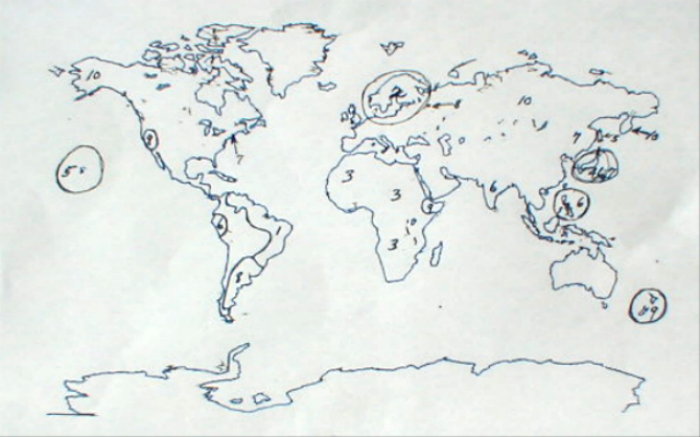
Parasitology Exam
Flukes and tTapeworms
I. Identify the parasite (40 points)
1. Bilharzia, St. Lucia, granulomas
2. drunken crab, rice fields
3. Tenebrio, cysticercoids
4. leopard frogs, black spots, amphistome
5. liver ducts, Formica fusca, Cionella
6. unarmed, inching proglottids
7. coenuriasis, lambs
8. Kuchenmeister, tri-lobed ovary, Mexico
9. unarmed scolex, uterine pore, scattered vitellaria
10. water chestnuts, small intestine, verminous intoxication
11. rabbits, dogs, bladderworms
12. shore birds, furcocercous
13. double set of reproductive organs, cysticercoids
14. mesenteric veins, Japan
15. monoxenous, Moscow, armed
16. hepatosplenomegaly, Aswan Dam
17. gravlox, Cyclops
18. striated embryophore, armed, dimunitive, equatorial genital pore
19. sparganosis, cats
20. tigers, microcercous cercaria, Semisulcospira libertina
II. Describe five epidemiological factors associated with the following: (15 points)
1. Echinococcus granulosus
2. Clonorchis sinensis
3. Schistosoma japonicum
III. Draw the reproductive tract of any trematode or cestode of your choice. Identify the specific organism you have drawn and label the parts. if you draw a trematode, mention any major differences as seen in cestodes. If you draw a cestode, mention any major differences you will find in the trematodes. (10 points)
IV. Fill in the blanks (you may only use an organism once in your answer) (20 points)
ORGANISM INTERMEDIATE HOST DEFINITIVE HOST INFECTIVE STAGE/DEFINITIVE HOST ORGAN IN DEFINITIVE HOST
Diphyllobothrium latum
Tenebrio molitor
sheep
cercaria
small intestine
V. Identify the organism found in the area of the world as designated by the numbers on the world map. Name the country or a country found within the designated areas. The organisms are not restricted to only those areas designated on the map. Identify one epidemiological factor which increases the parasite's incidence in that area. (15 points)
ORGANISM COUNTRY EPIDEMIOLOGICAL FACTOR
1.
2.
3.
4.
5.
6.
7.
8.
9.
10.
